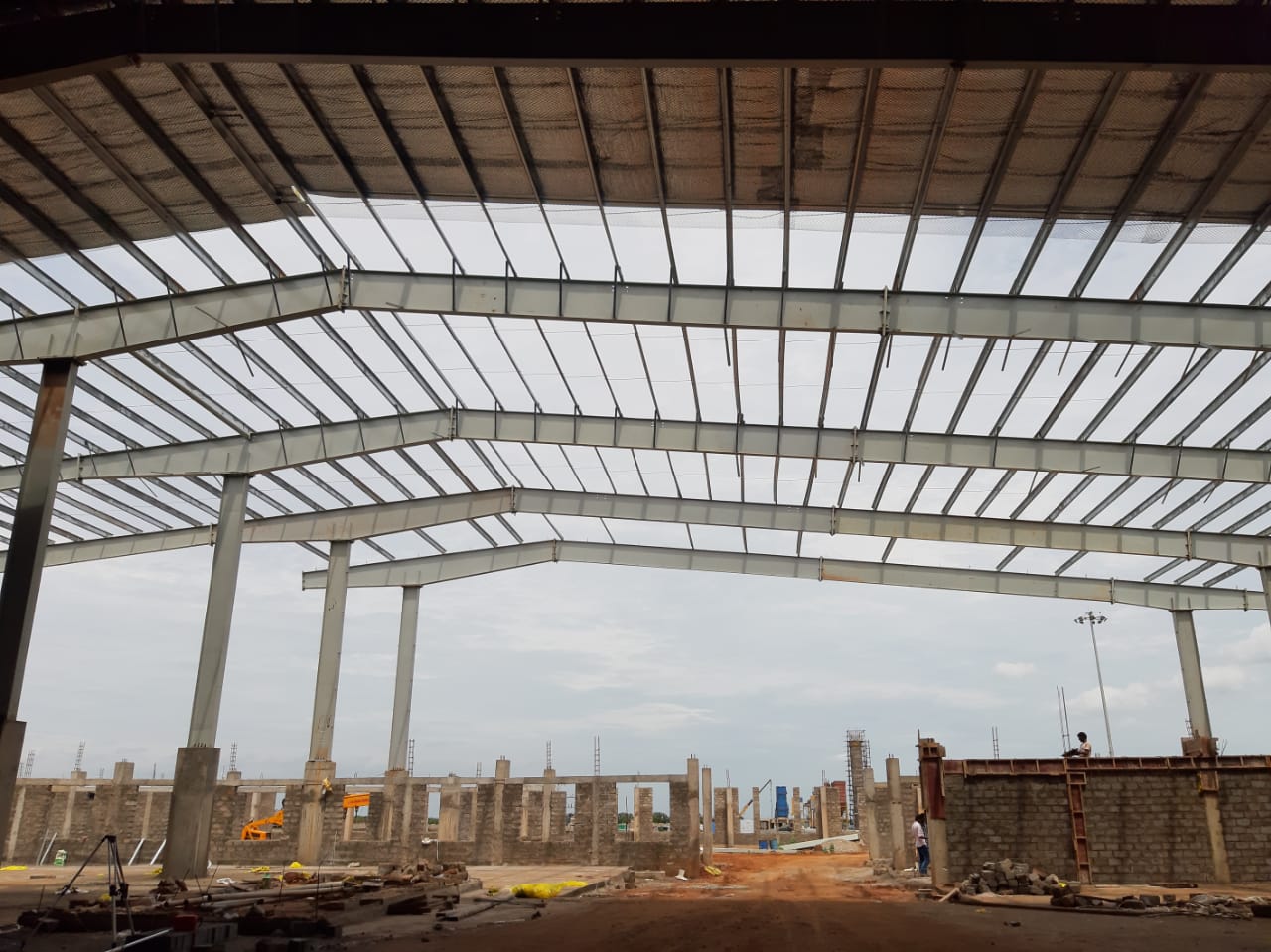Pre Engineered Buildings (PEB)
is the buildings which
are engineered at a
factory and assembled at site. Usually PEBs are steel structures. Built-up
sections are fabricated at the factory to exact size, transported to site and
assembled at site with bolted connections. A PEB is designed by us
in such a way that it can be fabricated using best suited inventory of raw
materials available from all sources and manufacturing methods that can
efficiently satisfy a wide range of structural and aesthetic design
requirements. Within some geographic industry sectors these buildings are also
called pre-engineered metal buildings (PEMB) or, as is becoming increasingly
common due to the reduced amount of pre-engineering involved in custom
computer-aided designs, simply engineered metal buildings (EMB).
During the 1960s, standardized engineering designs for buildings were first marketed as PEBs. Historically, the primary framing structure of a pre-engineered building is an assembly of plates into I-shaped members, often referred to as I-beams. In pre-engineered buildings, I beams used are usually formed by welding together steel plates to form I section. I beams are then field-assembled with bolted connections to form the entire frame of the pre-engineered building. The framing members will vary in web depth according to the local loading effects. Larger plate dimensions are used in areas of higher load effects. Other forms of primary framing can include trusses, mill sections rather than three-plate welded, castellated beams, etc. The choice of economic form can vary depending on factors such as local capabilities and variations in material vs. labour costs.
Cold formed Z and C shaped members may be used as secondary structural elements to fasten and support the external cladding. Roll-formed profiled steel sheet will be used for the external cladding of the building. While pre-engineered buildings can be adapted to suit a wide variety of structural applications, the greatest economy will be realized when utilising standard details. An efficiently designed pre-engineered building can be lighter than the conventional steel buildings by up to 30%. Lighter weight equates to less steel and a potential price savings in structural framework.


Comments
Post a Comment